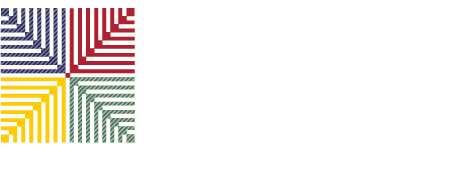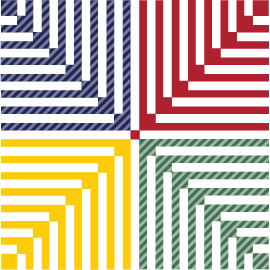

BPFF: First, tell us a little about your role in the film.
DA: I am the producer of The Parrot. The film, produced by Roman Roitman and myself, is actually a German/Jordanian co-production.
BPFF: What was the main objective that the directors hoped to achieve by making this film? What drove them to make it?
DA: With The Parrot, we wanted to tell a story about displacement, identity, adaptation, and acceptance of the other. Being Jordanian while also having Palestinian origins was a strong motive to make this film and set it in that fateful year of 1948—a year when a land was emptied of its people—and bring a story from that time to the big screen.
BPFF: Can you tell us a bit more about those Palestinian origins?
DA: Yes. Darin’s father is Palestinian and was just a baby when his parents (Darin’s grandparents) left their home in Ramleh, Palestine in 1948. Amjad’s grandparents on his mother’s side are Palestinian and my mother is Palestinian, hustled out of Jerusalem in May 1948 by my grandparents when she was still a newborn.
BPFF: The idea for the core story in The Parrot—to tell the story of an absent Palestinian family through their chatty parrot—is very clever. Who originally came up with this idea, and how?
DA: We grew up listening to stories about how our families were forced to leave their homes in Palestine in 1948. These stories stayed with us. One of them was about a family that left behind its pet parrot during the exodus. The screenwriters took this idea and transformed it into the story of The Parrot.
BPFF: In historic Haifa, how commonly did the situation in the film (that a Jewish family is given a Palestinian family’s house when the Palestinian family has fled or been forced to flee and forbidden to return) really take place? Was it the exception or the rule? Was it specific to Haifa, or did it happen elsewhere in Palestine?
DA: This was common and systematic in 1948 in all the Palestinian cities, not just in Haifa, as a large number of Jewish immigrants from all over the world came to Palestine after the declaration of the state of Israel. They were given the houses of the Palestinians who were forced to leave and forbidden to return. The only exception when it came to the Mizrahi Jewish immigrant family from Tunisia in The Parrot is that they came from a modest background and used their family connections to get a beautiful house in Haifa, which would have most probably been given to an Ashkenazi Jewish immigrant family coming from Europe.
BPFF: What is the film trying to convey about early sociopolitical and class tensions between the Ashkenazi European Jewish immigrants and Jews who arrived from Arab countries— such as, in this film’s case, Tunisia?
DA: As previously mentioned, this is also a story about acceptance of the other. While working on the story, we realized how the Ashkenazi European Jewish immigrants looked down on the Mizrahi or Sephardic Jewish immigrants who came from Arab countries and from the Maghreb and who were initially brought to Palestine to serve in the houses of the former. These class tensions continue to exist today in that society.
BPFF: Why did you choose Tunisia as the country of origin for this family? Was there any particular reason behind that?
DA: It is a historical fact that around 60,000 Jewish immigrants came to Palestine from North Africa between 1948 and 1950. In early drafts of the script, the immigrant family was Moroccan (statistics confirm that 10,000 Jewish immigrants during that time came from Morocco), however, and as we worked further on the script, we decided to perform a slight change to make the family Tunisian instead, an alteration that was corroborated by historical facts that confirmed around 18,000 Jewish immigrants from North Africa came from Tunisia. This decision was due to the fact that Tunisian Jews who immigrated to Palestine in 1948 (mainly from the island of Djerba), were leading normal lives in their homeland but dreamed of a better life in a faraway land, which fit better with the profile of the Jewish immigrant family in The Parrot. This also solved the dialect issue according to the actors/actresses who were cast in the main roles.


DA: We always felt strongly about having Hend Sabri play the role of Rachel; in fact, the writers/directors always visualized her while writing her character’s lines in the script. When we contacted her, she liked the project and agreed to be in the film. Yassmine Ben Amara, the young Tunisian actress who played the role of Aziza, acted in a witty short fiction film from Tunisia entitled Wooden Hand (2013) by Kaouthar Ben Hania, a film which Darin and myself discovered at Dubai International Film Festival that year, allowing us to see Yassmine’s talent first hand and to recognize her as Aziza in The Parrot. Also Ashraf Barhom, who played the role of Mousa, felt strongly about the project and agreed to play in the film.
BPFF: Where was the house in which the movie was filmed actually located? Was it, in fact, in Haifa? If not, where?
DA: The film was shot entirely in Amman, Jordan in a beautiful old house that was built back in the 1940s in the Palestinian architectural style, commonly known in Arabic as Beit al-Liwan (translation: the corridor house). The design mainly implied a big common area (or corridor) in the middle of the house, to which the rest of the rooms are annexed.
BPFF: How did you research the details of home decor, etc to make the house look so very “1948”?
DA: Darin and Amjad researched all elements as they wrote and were working closely with the production designer of the film from the project’s early stages. We also worked closely with a historian from Haifa, Dr. Johny Mansour, who was a great aid to the project when it came to all historical elements and references, including the house decor.
BPFF: How did you achieve such a realistic “parrotchatter” for the film? It really sounds like an actual parrot. Was it?
DA: Parrots are talkative indeed, and although we had a real parrot on set, it wasn’t very talkative and was quite tame, but our plan was always to record the parrot’s voice separately in post-production and add it. However, this task was much more challenging than we originally anticipated. We experimented with a lot with different actors and actresses and also recorded our own voices (the directors and myself) to arrive at a desired outcome, all while making sure that it never sounds comic. Ultimately, the voice of the parrot was successfully performed by Hasan Hijazi, a Jordanian actor and radio presenter, and our sound designer mixed in some bird sounds, resulting in the parrot’s voice that you now hear in the film.
BPFF: The film has had quite a bit of success. Would you kindly summarize some of the highlights to date and the future plans for The Parrot?
DA: The Parrot had its world premiere at the 2016 Dubai International Film Festival and has now screened at over 20 film festivals worldwide. The Parrot received the 2015 Film Prize of the Robert Bosch Stiftung, which allowed us to materialize the film. More recently, the film received two jury awards from Twin Cities and Malmo Arab Film Festivals in 2017.
BPFF: Finally, are the two directors planning to work together again? If so, do they have anything particular in mind for a next project?
DA: Darin and Amjad are each working now on their debut feature film projects. I am happy to be working again with Darin as producer of her first feature film entitled Farha, which is also set in Palestine 1948 and which has received multiple awards. Darin and I also established early 2016 our production company, TaleBox, along with our third co-founder & managing partner Nedal Sallam, to produce more Jordanian films and to continue sharing stories from our region with the rest of the world.
BPFF: Thank you for taking time to speak with us today.
The Parrot screens Sunday, October 29 at 3:00 pm at the Museum of Fine Arts, Boston, preceding our Closing Film, Stitching Palestine.
View the full festival schedule and buy tickets here.

